#melos han-tani is anodyne 2
Explore tagged Tumblr posts
Text


current vs all time top artists :3
#video game music and indie artists and bisexual yearning#concerned ape is stardew valley#melos han-tani is anodyne 2#machine girl is neon white#oh yeah milkypossum is picayune dreams#toby fox is undertale obviously#omori is omori#love that buck tick made it to the top list <3#music
1 note
·
View note
Text
[Review] Even the Ocean (PS4)
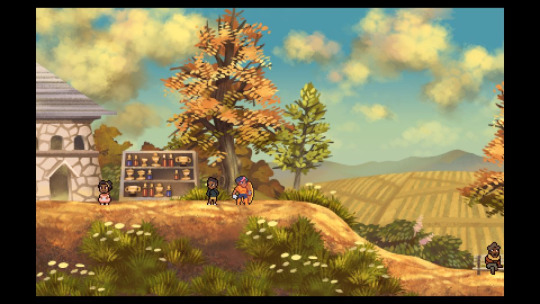
A unique and soulful puzzle-platformer.
Anodyne 1 and 2 are really special games, so it's past time for me to catch up on the rest of the Analgesic catalogue from Melos Han-Tani and Marina Kittaka. This is their second game together, and takes on the puzzle-platformer genre but with a heavy emphasis on story.
Compared to the Anodyne games, the themes are a little more straightforward and the world more grounded than their abstract dreamlike spaces. The story deals with environmental and social issues, but with strong characters who feel very human and real through their dialogue. The story opens with the death of a minor character, but rather than exploiting it for dramatic stakes and moving on, the entire rest of the game sees you forming a friendship with her grieving partner, discussing deep topics with her and so on. As the game goes on and the stakes are further raised, it still takes the time for smaller moments and well-drawn minor characters.
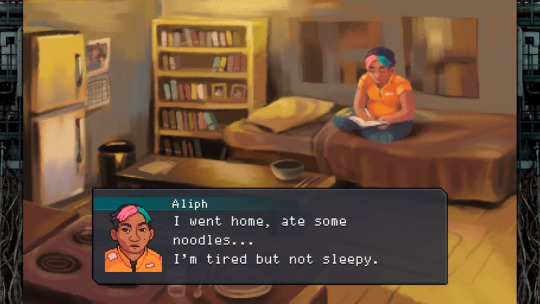
This emotional content and social commentary is the strongest part of the game, not to say that the gameplay parts aren't also good. But the puzzle platforming can feel isolated or distinct from these aspects. The mechanics of it do tie into the worldbuilding which is linked to the themes though. In this sci-fi fantasy world, the main governing principle is the two energy types: light/green/vertical, and dark/purple/horizontal. Everything is built around this central idea.
Our protagonist Aliph has to balance the two energy types while blocking with a directional shield. She has a personal energy bar and when interacting with objects and obstacles this shifts between the two extremes. Charge yourself with dark and you walk faster, with light and you jump higher. But rather than a traditional health system, if you fill up completely on one or the other you die. Basically all interactable elements are aligned with either energy, and this leads to all sorts of clever puzzles along with the balancing act of managing your own tendency.

Progression through the puzzle spaces is mostly linear and I didn't find it very challenging for most of the runtime. There is a lot of customisation though, and you can choose if you want to just play the action parts or the story parts, as well as gameplay modifications to make it more manageable if you're having trouble. This makes the game very accessible, although oddly there is no option for button reassignment.
As I've come to expect with Analgesic games, there is also an extensive postgame although Even the Ocean takes it to extremes I haven't yet seen in their catalogue. You get new options to zoom around, warp, and display minimaps but most of all you get an entire new game world consisting of rough drafts and earlier versions of levels filled with developer commentary. This really opens the door on the development of the game and is really interesting from an archival perspective, having this behind the scenes content in playable form within the game itself. You get to see assets from when all the environment pixel art was made by hand (the final game uses art from larger images outside of the "dungeon" areas), as well as much more complex and difficult level design ideas.

These in-depth offerings are such a fascinating look at what the game could have been that I couldn't help but wish that some of it had made it to the final product, that we had more polished forms of these more challenging puzzles. On the other hand, the choices made to simplify the art production process I thought resulted in a fantastic end product, the interesting character designs coming through well in pixel form against the beautiful and moody backdrops.
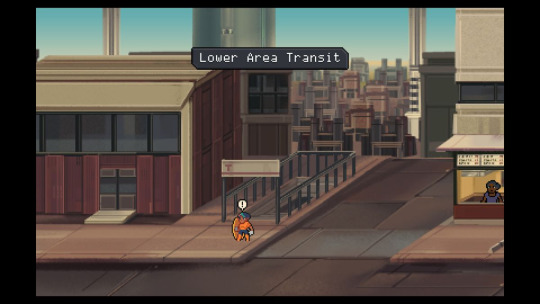
Either way, these extras are remarkable, a candid conversation with the player on how the game was shaped and when you are directly told the rationales it's hard to argue that Melos and Marina made the right decisions to make the game memorable and accessible, and the game as a whole is much stronger and more interesting for having them. Please spend some time exploring the postgame if you give this a go! Anyway, although I have quibbles with the slow difficulty curve and the sometimes awkward menus, Even the Ocean ended up being another unique offering from Analgesic, packed full of ideas and heart.
11 notes
·
View notes
Text
3D action RPG Angeline Era announced for PC
Gematsu Source
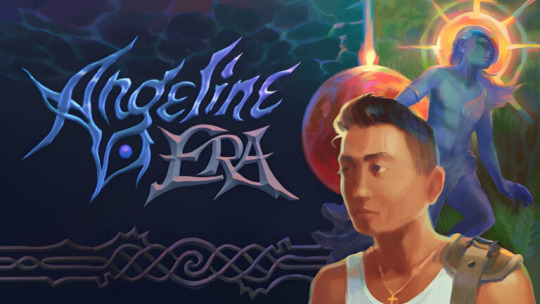
Anodyne series developer Analgesic Productions has announced Angeline Era, a 3D action RPG inspired by action throughout gaming history, from the Ys series to Elden Ring. It will launch for PC via Steam in 2024.
Here is an overview of the game, via its Steam page:
About
Bump into enemies to automatically attack—no attack button needed! This fast-paced and athletic combat experience is easy to pick up, but difficult to master. Intense boss fights will test your skills!
Explore the nonlinear overworld however you’d like. Challenging, ancient dungeons sit near quiet forests, each filled with outrageous hazards, charming creatures, and unholy abominations.
Hunt down the greatest Sinners plaguing the esoteric land of Era. Within an intertwined history of Angels, Humans, and Fae, seek the truth of Angeline Era!
Key Features
Fast-paced combat combining buttonless Bumpslashing, ranged gunplay and jumping!
Eclectic levels filled with moving walls, deadly volleyballs, sentient hammers.
Inspired by action throughout gaming history, from the early Ys entries to Elden Ring.
Mix and match upgradable weapons and armor for alternate playstyles.
A nonlinear world! Explore freely, and search the overworld for hidden levels and secrets.
A challenging core experience, with multiple difficulty and approachability options.
A world influenced by Irish fantasy and arcane Christian myth.
From the creators of Anodyne 2 and Sephonie, Melos Han-Tani and Marina Kittaka!
Watch the announcement trailer below.
Announce Trailer
youtube
6 notes
·
View notes
Photo







Melos Han-Tani - Anodyne 2: Return To Dust Original Soundtrack | Yetee Records | 2021 | "Primordial Haze" Blue & Green Swirl | /300
#melos han-tani#anodyne 2: return to dust#yetee records#vinyl#colored vinyl#lp#music#records#record collection#vgm#video game music#soundtrack#anodyne#analgesic productions#marina ayano kittaka
16 notes
·
View notes
Text
Do ya like platformers?
If you're following this blog, I can only assume you do. If yes, may I recommend a wonderful little game called Sephonie?

It's another game by Melos Han-Tani and Marina Kittaka, the creators of Anodyne and Anodyne 2, which I have also spoken about before. The game is very story driven, and follows Riyou, Amy, and Ing-wen (seen above), a team of biologists sent to study the strange and isolated Sephonie Island. Using a device called ONYX, they can "link" with the various unique creatures of the island, forming deep connections with them, eachother, and the island itself. And that's just the basic premise!
The platforming is also very well done. The game makes use of some very unique mechanics that honestly take a little getting used to, but once you get a hang of the controls dashing through the air and wallrunning will feel natural and fun!
Really, it's the kind of game that's all about your experience with it, so I won't go into too much more detail. I'll end this by saying that overall it's a beautifully done masterwork of 3D platforming with a great story filled with the surreal and spiritual narration the creators are known for. I can't recommend it enough, please go and check out the steam page for more info!
#cam's game recs#sephonie#anodyne#anodyne 2#seriously the creators are so underrated and their games are so quality; especially being made by basically just two people#their characters are all just so Human and well written#oh and I couldn't find a way to naturally bring it up in the post proper; but there's a lot of lgbt rep if that sweetens the deal for anyone#there's also a switch port if that's more your style
28 notes
·
View notes
Text
Formalism, Dreams, Souls
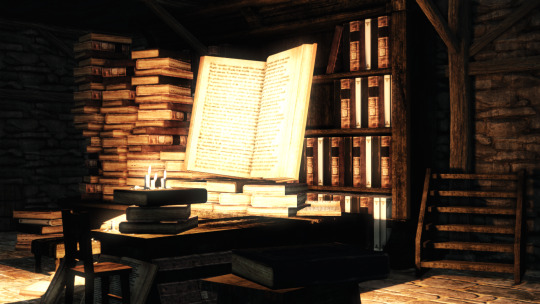
Melos Han-Tani published an essay early in June of this year entitled “Semicontinuity (A framework of analyzing videogame space)”, and I want to respond to what it brings to the table concerning the Dark Souls trilogy. My intention here is not to make a point about which of these works I think is singularly the best, or to belittle anyone’s intelligence, but to observe how this position has been laid out and offer some alternatives and tangential insights.
What first stands out to me is that we are largely not beyond primarily technical analyses of Dark Souls 2. This applies to cases made for and against the game. This has had the effect, I think, of making it overly easy to devise both points and counterpoints. If Dark Souls 2 is a mechanistic diorama where points of interest are determined by one’s expectations of what “game design” looks like, or can look like, then we are still dealing with taste. That’s fine, but taste usually has been the least important factor in revealing why the first or third Dark Souls are interesting. Someone going by the handle of hbomberguy put out a video in 2017 entitled “In Defense of Dark Souls 2”, and it amounts to two hours (!) of a person enumerating their design preferences. Again, fine with it existing -- but this is the sort of analysis which cannot hold up to the basic scrutiny of asking why it matters. This is like if narrative criticism were 90% about the prose, and the remaining 10% were dedicated to the narrative, its social implications, the cultural context, etc.
This plays out in the essay through its dedication to explaining how Dark Souls 2′s progression functions, relative to Dark Souls’ and Dark Souls 3′s, and its conclusions being focused on how this structure produces, for Han-Tani, an atmospheric gestalt, and how multiple methods of geographical continuity -- rather than a single prescriptive method -- are available to the game designer. But what, exactly, is being expressed when Han-Tani writes, “...the ways areas are connected can be carefully thought through and become expressive”? The one time we are directed to think about this is right near the very end, when Han-Tani writes, “These sorts of formalized techniques can be used hand-in-hand with the story themes to make certain ideas resonate stronger with the player”, and not even with reference to Dark Souls 2, but rather to Anodyne 2! If the impetus for this essay was an attempt to explicate a qualitative judgment on the basis of memorability, I am left with the idea that the Dark Souls series is, at its best, a carnival ride -- entertainment where what ultimately matters is the continuous impact of novelty, one manufactured theme or ambient flavor clashing against the other.
Surely this metric will resonate with some people. The problem for me is that, while it’s a fine metric on its own, and I would happily use it to explain why I’ve enjoyed some other things, I think its description of a work as a collection of sights and sounds with little to say outside of a Wow Factor can, depending on the subject, do the work (or associated works) a great disservice. Dark Souls 2 is not special on the basis of strange transitions, and I would contend that very few games over the history of the medium have lent themselves to a depth of a mythopoeic interpretation which Dark Souls and Dark Souls 3 have. On this level, then, I see Han-Tani’s essay as a sort of counter-cultural formalism, which responds, in so many words, to the clichéd charge of Dark Souls 2′s transition between the Earthen Peak and Iron Keep areas being “nonsensical” by saying, “Yes -- and that’s why it’s good.” But extolling formal virtues which reject mainstream prejudices about what is and isn’t legitimate keeps us locked into that aforementioned technical arena!
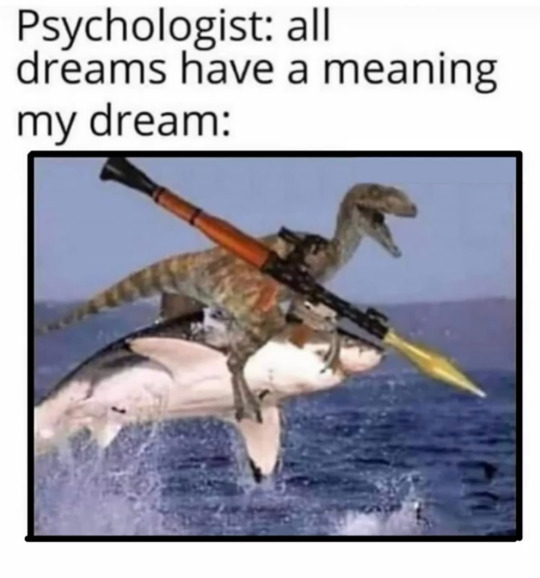
What stands out to me secondly is the perpetuation of characterizing Dark Souls 2 as dreamlike. For as long as I’ve paid attention to reevaluations concerning the game’s oft-maligned discrepancies, this has been a refrain for advocates and those who may be attempting appreciative commentary while remaining unmoved. Here, Drangleic is described as “some fever dream of a continent”, and, at the essay’s end, Dark Souls 2 as a whole is implicated by association with reference to “...a fever dream of unrelated parts and images that seem to go on endlessly, a fearsome nightmare or dream.” Once again, we are given a descriptive framework, that of a comparison to dreams, but the interpretive content of that framework is absent. In this framework, dreaminess connotes surreal organization and strange or outrageous moments/narratives played “straight.” Although this is a common way of typifying dreams (and fair, as far as the surface level stuff goes!), it ignores the ontological and teleological aspects. The image above expresses this axiom by humorous intimation: i.e., while perhaps a rare dream might be instructive, in all other cases dreams are the mind organizing elements in a free-form manner, as if it were imaginative exercise, and producing nonsense that exceeds any psychoanalytic tradition’s capacity to interpret. So, ostensibly, dreams are “weird”, but to see them all as inherently meaningful and bountifully symbolic is to engage in a kind of exaggerated pareidolia.
Following my contrary train of thought, one could say that the reason no one has been able to speak to the nature of dreams with regard to Dark Souls 2 is because Dark Souls 2 actually has nothing to say about it itself; that, really, the aforementioned axiom is unintentionally appropriate for a work where the topical can never graduate to the specific. I will leave that sort of reasoning and others to readers. What I want to propose -- and I realize that now I am stepping well outside of the essay’s scope -- is a retention of dreams as an interpretive model and an application of that to Dark Souls and Dark Souls 3. If we accept that what makes dreams dreams is that depth of meaning and symbolism, then it could be said that the first and third Dark Souls are the most dreamlike of all, for they are drenched in these aspects -- much more so than Dark Souls 2! What makes the spaces of Lordran and Lothric so fantastically vivid is -- yes, the styles of architecture, the vistas’ extents, the iterative craft of the level design -- how dense with intentionality, purposefulness, they are, how often we experience a synchronistic collision wherein our avatar interacts with a space whose ornamentation, artifacts, articles, and inhabitants have direct relevance to the mysteries of world and being, local and non-local.
These connections and the truths they point to are barely ever straightforward. Like the language of dreams, the visual and textual constructions of Dark Souls and Dark Souls 3 are cyphers, cryptograms. Also like dreams, even once we have located embedded archetypal narratives, their varied mutability preserves a fundamental mystery, compelling further interpretations and producing abundant layers of cross-referential and cross-cultural significance. If we look at Dark Souls 2′s textual constructions, however, we will find a through line of citations of persons and places which, often with the help of withering codas, collapse into their own irrelevance, artificiality, and ahistoricity. Time and again we are told that we simply cannot know about the matter, or perhaps the matter wasn’t meaningful to begin with. And, precisely due to that ahistoricity, very few of those textual constructions involve the world we directly navigate. In effect, we are led to a bunch of dead ends whose multiplicity it may have been assumed would invoke curiosity; yet curiosity is useful only inasmuch as there is room for it to explore.
I believe that the metatextuality of the Dark Souls trilogy varies by entry, and that what is different about Dark Souls 2 is that its responses are largely mechanical -- more meta-mechanical than meta-textual --, with comparatively little emphasis placed on responding to the first title’s material, and with, as noted, little potential for growth allowed among its own institutions. This is, unfortunately, a significant barrier for expansive interpretations, and I am sure it has contributed to the overabundance of technical analyses. Even Dark Souls 3 didn’t know what to do about Dark Souls 2, and limited its involvement to stand-alone references, such as the petrified Giant Tree outside of Firelink Shrine, or Gilligan’s corpse by the Profaned Capital’s first bonfire. In the future, perhaps the most illuminating analyses of Dark Souls 2 will acknowledge its internal strain of cynicism, quite unlike the fatalism of Dark Souls and Dark Souls 3, and I think reflective of its developmental turbulence, likely haunted by a pressure to match the first title’s resonant successes.
25 notes
·
View notes
Photo

Today’s heroine is Nova from Anodyne 2 by Melos Han-Tani and Marina Ayano K.
31 notes
·
View notes
Photo
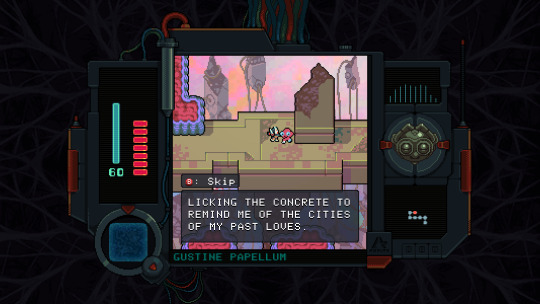
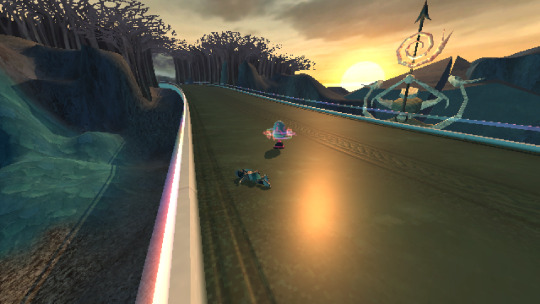
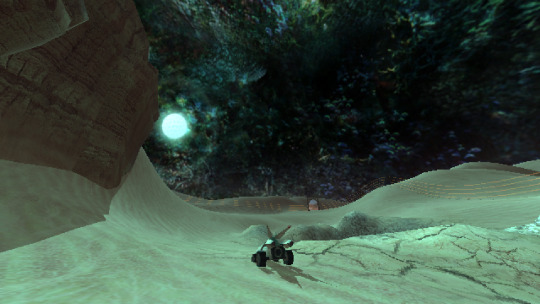

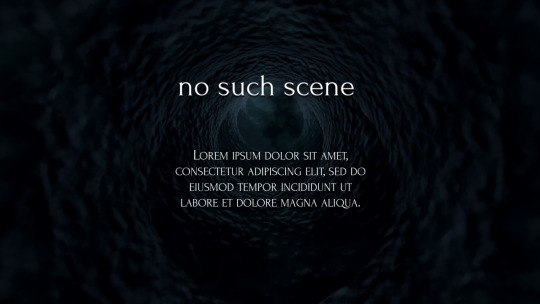
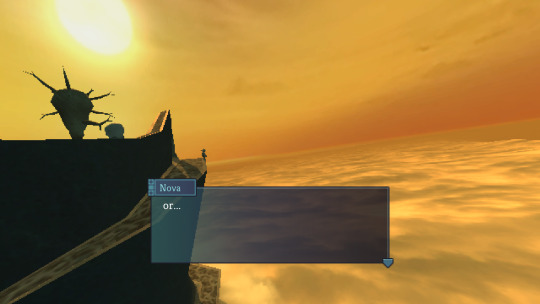
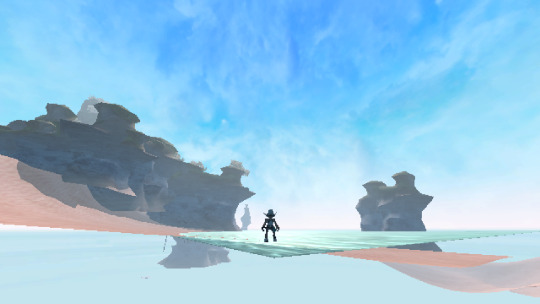
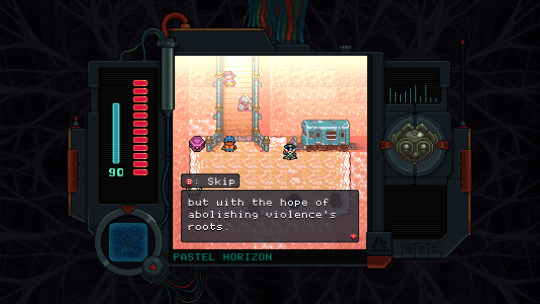
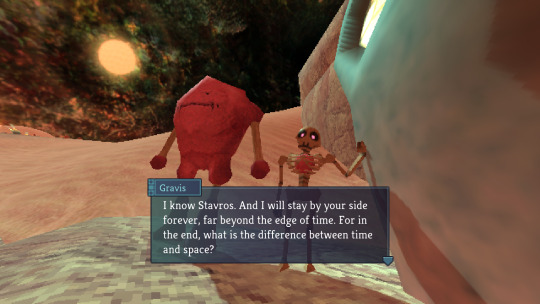
stills from “Anodyne 2: Return to Dust” by Melos Han-Tani and Marina Kittaka
26 notes
·
View notes
Audio
Top 47K - Ihatovo Monogatari (feat. Melos Han-Tani)
Join the HG101 gang as they rank and discuss an SNES game based on the short stories of an early 20th century Japanese short story author, with special guest Melos Han-Tani (Anodyne 2, All Our Asias)!
2 notes
·
View notes
Text
Game release: "Sephonie" (PC)
Game release: ���Sephonie” (PC)
Melos Han-Tani, Marina Kittaka, and Analgesic Productions‘ 3D adventure-platformer Sephonie tasks players to solve puzzles and mysteries in another world. Anyone who has heard of or even played games from the developer, like Anodyne 2: Return to Dust, will recognize the zen-like atmosphere the team creates. This one is no different, as it’s about Sephonie Island where the three shipwrecked…

View On WordPress
0 notes
Text




Anodyne 2 OST insert scans + Kitty on Fire Records shipping package stamp
17 notes
·
View notes
Text
[Review] All Our Asias (PC)

Another thought-provoking combination of retro-style graphics and emotional sincerity!
Between Even the Ocean and Anodyne 2, Melos Han-Tani (one half of Analgesic Productions) created this short adventure game. Well, Marina Kittaka (the other half) made some contributions along with others but All Our Asias is mostly a one-person project and a personal story-driven experience.
The game is a meditation on various topics. What does it mean to be Asian? How well can you really know another person? What kind of impact do you want to leave on the world? Through Yuito’s quest to discover more about his estranged father his own motivations and identities are challenged, and by extension the player’s. He struggles against bureaucracy, finds truths mundane and profound, and encounters compassion and community. There’s a lot going on in the game’s 90-120 minute runtime.

All this is wrapped in an exploration of low-poly 3D spaces that feel very much like Anodyne 2’s 3D overworld. The trademark Analgesic melancholy is here in spades accompanied by a familiarly haunting soundscape. The environments are abstract, built from the dreams of a dying man of real places and memories, made surreal and twisted. Trundling around them is slow, which gives you time for the atmosphere to wash over you. They may just feel like a vehicle for the story at times but they’re still very evocative in their own right even if the “gameplay” of navigating them is relatively shallow.

Like other Analgesic games, there is naturally a postgame. Infinite flight is unlocked along with warps to the different game sections. Developer commentary and behind the scenes material is however relegated to a separate book which can be purchased in a “fan pack” along with the soundtrack. The game itself is free so it’s a good way to support Melos and get more out of this piece.
Since it is free, there’s little barrier to trying it out… I did have to set up a Joy2key profile since it failed to natively recognise my controller, but it was worth it. The low-poly stuff is a good way to get you in the door and then you just might find that the game makes you think about things a bit! We need more of that in our games, I reckon.
2 notes
·
View notes
Text
Story-Driven 3D Platformer 'Sephonie' Launches Q4 2021. Steam Demo Out Now.
ANALGESIC ANNOUNCES 'SEPHONIE' FOR Q4 2021 RELEASE ON PC. By Han Tani & Even Kei
Publicly-available demo out now on Steam.
#TheIndieBros #IndieBros










Analgesic Productions is pleased to reveal its upcoming story-driven 3D platformer Sephonie will launch within Q4 2021 on Windows PC and Mac -- with a demo currently available on Steam. Memories linger across time, deep under the island of Sephonie. Explore a massive cave network, and link with unidentified species using the novel Puzzle Grid system. Explore the island's depths as shipwrecked biologists Amy, Ing-wen, and Riyou, unravelling mysteries both scientific and spiritual, watched over by a supernatural being who exists beyond human history.
Next-generation platforming The caves of Sephonie vary wildly from lush, jade chasms to reddish flora-filled sandstone caverns. Their physical and rocky layouts demand a fitting moveset! Fling yourself over high ledges using the satisfying Teledash Vault, activate the quick-but-risky Sprint when you need to cover long distances, and deftly Wallrun across dangerous outcroppings. When the obstacles become insurmountable, use the plants and animals of the environment to unlock powerful new abilities like soaring high jumps and swift grapples.
The Relaxing and Casual Puzzle Grid System The trio must research the island's unknown creatures by Linking with them. Using the one-of-a-kind "Puzzle Grid" system, you'll rotate and place a series of multi-colored puzzle pieces onto the board, and connect large, same-colored islands. The caves are full of both small and massive creatures -- each with their own importance to the cave's ecosystem and each with a different challenge to overcome.
There's no 'right' solution to Linking: use your intuition to react to the creature's moves and what appears on the board, and you will soon be on your way to success!
A Research Trip Gone Awry In the near future, three biologists are on a joint research trip to use their ONYX implants to research the creatures of the uninhabited Sephonie Island. However, a mysterious phenomenon destroys their ship, leaving them shipwrecked.
Amy Lim, Taiwanese-American and bold leader, hails from the midwestern USA town of Bloomington. Riyou Hayashi, an analytically-minded Japanese-Taiwanese researcher, calls the bustling Tokyo his home. And Ing-wen Lin, a kind and considerate Taiwanese scientist, lives in Taipei.
The trio will find their motivations and loyalties put to the test as they navigate Sephonie’s caverns, facing not only rocks and creatures but also their deepest memories and dreams. As they grow more intimate with each other and the island, an ancient force, brewing deep in the island's abyss, may threaten their newfound relationship, and the world...
Features A deep, emotional story about the close bonds of a trio, the priorities of nations, and the delicate connection of humans and nature, spanning beyond human history.
A human experience crafted entirely by the IGF Grand Prize-nominated duo of Marina Kittaka and Melos Han-Tani, behind works such as Anodyne 1 & 2, Even the Ocean, and All Our Asias.
Master a parkour-esque moveset to sprint, wallrun, jump, and fling yourself through Sephonie Island’s rocky and physical caverns.
A novel and accessible Puzzle Grid System that will stretch your brain in fun ways.
A beautiful and varied cave system filled with all manner of large and surprising creatures
About Analgesic Productions Analgesic Productions is a studio specializing in single-player, narrative-heavy adventure games with experimental flair and twists on traditional gameplay. We are Marina Kittaka and Melos Han-Tani. We're the creators of Anodyne, Anodyne 2, Even the Ocean, All Our Asias, Bratavism, and more.
To learn more about Analgesic, visit: https://analgesic.productions/ Discord: https://discord.com/invite/analgesic Twitter: @analgesicprod
youtube
0 notes
Text
Sephonie is a unique platformer coming to Linux this year

Sephonie story driven 3D platformer gets a reveal in Linux gaming, Mac and Windows PC. Thanks to developer Melos Han-Tani and Marina Kittaka. Due to make it's way onto Steam this year. This story driven 3D platformer is due to launch later this year. As memories linger across time, deep under the island of Sephonie. Explore a massive cave network, and link with unknown species using the novel Puzzle Grid system. Players will also explore the island's depths as shipwrecked biologists. Thanks to Amy, Ing-wen, and Riyou who are unfolding these mysteries. Of course, they are both scientific and spiritual. While watched over by a supernatural being who exists beyond human history.
Next-generation platforming
The caves of Sephonie vary wildly from lush, jade chasms to reddish flora filled sandstone caverns. Their physical and rocky layouts demand a fitting move set. So you can fling yourself over high ledges using the satisfying Teledash Vault. Then activate the quick but risky Sprint when you need to cover long distances. As you Wallrun across dangerous outcroppings. When the obstacles become impossible, use the plants and animals of the setting. This will also unlock powerful new abilities like soaring high jumps and swift grapples.
The Relaxing and Casual Puzzle Grid System
The trio must research the island's unknown creatures by Linking with them. Using the one of a kind "Puzzle Grid" system, you'll rotate and place a series of multi colored puzzle pieces onto the board. While you connect large, same colored islands. The caves are full of both small and massive creatures. Each has their own importance to the cave's ecosystem and with a different challenge to overcome. Marking a more interesting title in Linux gaming, Mac and Windows PC. There's no 'right' solution to Linking. So you will use your intuition to react to the creature's moves on the board. And you will soon be on your way to success.
Sephonie Reveal Trailer
youtube
A Research Trip Gone Awry
In the near future, three biologists are on a joint research trip. Out to use their ONYX implants to research the creatures of the uninhabited Sephonie Island. However, a mysterious event destroys their ship, leaves them shipwrecked. Amy Lim, Taiwanese American and bold leader, hails from the midwestern USA town of Bloomington. Riyou Hayashi, an analytically minded Japanese Taiwanese researcher, calls the bustling Tokyo his home. And Ing-wen Lin, a kind and considerate Taiwanese scientist, lives in Taipei. The trio will find their motives and loyalties put to the test. Working through Sephonie’s caverns. Facing not only rocks and creatures but also their deepest memories and dreams. As they grow more intimate with each other and the island. The ancient force, brewing deep in the island's abyss, may threaten their newfound relationship, and the world.
Sephonie Features:
A deep, emotional story about the close bonds of a trio. The priorities of nations and the delicate connection of humans and nature. Spanning beyond human history.
A human experience crafted entirely by the IGF Grand Prize nominated duo. Both Marina Kittaka and Melos Han-Tani, behind works such as Anodyne 1 & 2, Even the Ocean, and All Our Asias.
Master a parkour-esque moveset to sprint, wallrun, and jump. Also fling yourself through Sephonie Island’s rocky and physical caverns.
A novel and unique Puzzle Grid System. Due to stretch your brain in fun ways.
A beautiful and varied cave system filled with all manner of large and surprising creatures
Sephonie is due to release in Linux gaming, Mac and Windows PC via Steam in 2021. The story driven 3D platformer release date is still TBD. But you can jump on the Analgesic Discord and follow the game on Twitter.
#sephonie#3d platformer#story driven#linux#gaming news#melos han-tani#marina kittaka#ubuntu#mac#windows#pc
0 notes
Text
Anodyne 2: Return to Dust Available Now
Summary Anodyne 2 co-developer Melos Han-Tani talks about the game’s whimsical story and gameplay. Learn about what you’ll be able to do in its world, as well as why the game has a unique mix of 3D and 2D gameplay. Anoydyne 2 is available now for Xbox Series X|S and Xbox One on the Xbox…
https://is.gd/nWL1MY
0 notes
Text
All Our Asias – Trò chơi phiêu lưu khám phá về miền ký ức đã qua
All Our Asias – Một cuộc phiêu lưu lấy cảm hứng từ câu chuyện 32-bit, khám phá những bối cảnh siêu thực trong tâm trí của một người cha đang hấp hối. Một trải nghiệm ngắn để bạn tự giải mã, ngần ngại gì mà không chơi ngay vì game free!
All Our Asias – Trò chơi phiêu lưu khám phá về miền ký ức đã qua
All Our Asias là một cuộc phiêu lưu 3D miễn phí, siêu thực, lo-fi, về người Mỹ gốc Á, bản sắc, chủng tộc và quốc tịch.
Nhân vật chính là Yuito. 31, người Mỹ gốc Nhật.- nhà phân tích quỹ phòng hộ. Một ngày nọ, anh nhận được một lá thư từ người cha già yếu sắp qua đời. Đã quá muộn để Yuito nói chuyện với ông. Tuy nhiên, tất cả chưa hẳn đã kết thúc.
Yuito đang đứng trước một cơ hội lớn để nhìn lại quãng đời của người cha bằng việc tham gia Memory World Visitation – những cảnh quan siêu nhiên nơi anh có thể khám phá những trải nghiệm và bí mật của cha mình. Mặc dù có rủi ro nhưng Yuito cảm thấy bắt buộc phải thực hiện cuộc hành trình này.
Hành trình khám phá của nhân vật
Xem thêm: A Museum of Dubious Splendors – khám phá những căn phòng bảo tàng bí ẩn
Những tính năng bạn sẽ được trải nghiệm:
Dài 90-120 + phút.
��iều hướng các khu vực kỳ lạ và siêu thực thông qua chuyển động đơn giản của người thứ 3 và nền tảng ánh sáng. Rất dễ chơi.
Trò chuyện với các nhân vật nhỏ và lớn khi Yuito tiến sâu hơn vào TMemory World này.
Một hướng nghệ thuật lo-fi chịu ảnh hưởng của thời đại PSX và N64.
Một bản nhạc của Melos Han-Tani và các cộng tác viên tài năng.
Từ Melos Han-Tani, đồng sáng lập của Anodyne và Even the Ocean.
Không gian siêu thực
Đừng bỏ lỡ: Black Survival – Game nhập vai sinh tồn khám phá những điều bí ẩn trên đảo hoang
Bạn sẽ di chuyển giữa các khu vực là tương tác với cư dân ở đó để khám phá danh tính, trí nhớ và ký ức thông qua lăng kính về mối quan hệ của chàng trai trẻ với cha mình. Khi tạo ra All Our Asias, nhà phát triển rõ ràng có rất nhiều ý tưởng mà họ muốn dung hòa trong trải nghiệm tương tác. Với trò chơi này, từ tác phẩm nghệ thuật, độ phân giải thấp siêu thực cho đến những câu chuyện cá nhân cảm động, đủ thú vị để bạn nên thử chơi nó.
Có nhiều khu vực để di chuyển và khám phá
Xem thêm: BRAINPIPE: A Plunge to Unhumanity – trò chơi điều khiển không gian tránh chướng ngại vật
Cấu hình chơi và link download game All Our Asias
Đồ họa của game All Our Asias yêu cầu cấu hình như sau:
HĐH: Windows 7
Bộ xử lý: 2 lõi 2.0 GhZ
Bộ nhớ: RAM 2000 MB
DirectX: Phiên bản 11
Dung lượng: 250 MB dung lượng trống
Thẻ âm thanh: Bất kỳ
Ghi chú bổ sung: Nếu trò chơi của bạn quá chậm, hãy tìm .exe và giữ ALT trong khi mở để thay đổi cài đặt chất lượng
Còn chờ gì nữa mà không trải nghiệm All Our Asias ngay tạị Steam
The post All Our Asias – Trò chơi phiêu lưu khám phá về miền ký ức đã qua appeared first on EXP.GG Vietnam.
source https://exp.gg/vn/game-moi/all-our-asia/
0 notes